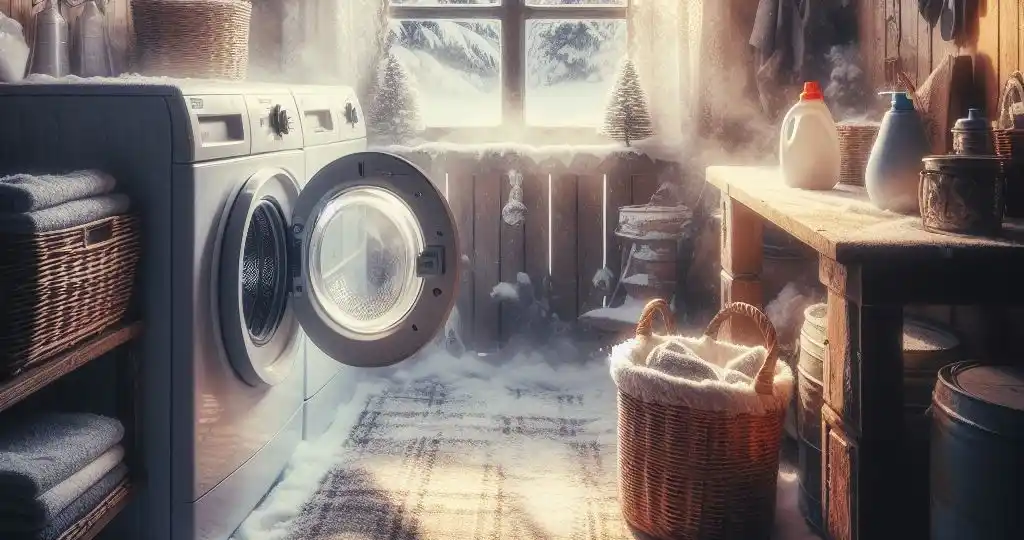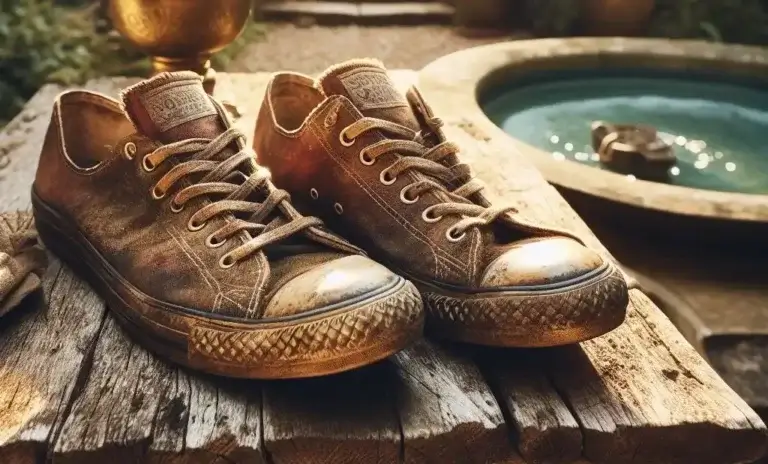How to Keep Washer from Freezing: Explore How to Winterize a Washing Machine
Winter brings freezing temperatures that can wreak havoc on your home appliances, especially your washing machine. A burst pipe or cracked pump from frozen water can cause hundreds of dollars in flooding damage and repairs. Prevent washing machine freeze damage with proper preparation before the cold winter season sets in.
In this comprehensive guide, you’ll learn how to keep washer from freezing, including :
- Where washing machines are most vulnerable to freezing
- Signs your washer may be freezing or frozen
- Step-by-step instructions to fully winterize your washing machine
- Pro tips to keep washers safe even in unheated areas
- What to do if your machine does freeze this winter
- FAQs about winterizing washing machines
If freezing temperatures threaten your washer this winter, this guide has you covered. Follow our winterizing tips now before it’s too late!
Table of Contents
Why Washing Machines Freeze in Winter
Washing machines left vulnerable can easily freeze and burst in sub-zero temperatures. Even in above-freezing conditions, rooms that dip below 45°F pose a risk of ice crystals forming.
Here’s where the most common washing machine freeze points occur during the winter season in your washer and dryer:
- Water lines – The pipes supplying hot and cold water to your washer can freeze. This includes shutoff valves behind the machine.
- Pump – Residual water left sitting in the pump if not properly drained can freeze and crack the pump casing.
- Hoses – Water in the removable drain and inlet hoses can freeze, warping their shape.
- Drain – Standing water in the drain hose running to your home’s plumbing can turn to ice.
Luckily, properly winterizing your washing machine requires only basic DIY skills and inexpensive materials from your local hardware store.
Repairing freeze damage is far less costly than fixing burst pipes and the ensuing water damage.
6 Signs Your Washing Machine is Freezing

Be proactive about winterizing before freezing becomes an issue. But also watch for these signs cold temperatures are already affecting your washer.
- Ice buildup on pipes or hoses – Visually inspect all water lines including the washer drain for ice crystals or flakes around rubber hoses.
- Loud banging noises when running – If you, as a homeowner, hear banging noises coming from your washer and dryer in the winter season, iced-over components may be the culprit.
- Water leaks – Cracks from freeze damage will begin slowly leaking water as the ice melts. Catch this early before major leaks arise.
- Unit won’t drain water – Frozen drain lines prevent proper water drainage and the tub fills.
- The washer stops mid-cycle possibly due to ice formation during the harsh winter season. – Sensors detect freezing issues or obstruction and machine safety features shut it down.
- Buttons or knobs don’t work – Ice buildup behind the control panel stops electrical connectivity.
Don’t continue using your washing machine once any freezing signs appear. Serious damage occurs once ice expands and causes cracks. Call in pros immediately if you suspect the unit has frozen solid for any period.
How to Keep Washer from Freezing Step-By-Step Guide

Completely winterizing your washing machine requires four key steps: disconnecting water lines, draining all water, adding RV antifreeze, and insulating vulnerable parts prone to freezing.
Step 1: Disconnect All Water Lines
Shutting off the hot and cold water lines prevents future use (and potential leaks) once winterized. You must drain any remaining water from them first before disconnecting.
Follow this process for proper water line winterization:
- Make sure the washing machine is powered OFF initially.
- Locate your hot and cold water shutoff valves nearby and turn them OFF (clockwise). Typically on walls behind the unit or down by the laundry room floor.
- Disconnect the inlet fill hoses running from household water lines to your washer. They attach via threaded fittings and require a wrench to loosen.
- Drain any residual water from the hoses themselves by holding disconnected ends over a bucket and allowing the remaining water to spill out. Remember to turn the water faucet off beforehand.
- Leave water lines disconnected and ensure shutoff valves stay closed throughout winter months. Mark with indicators (like tags or stickers) showing the unit is winterized.
- If washing machine pipes run through unheated areas, wrap them fully with insulating pipe sleeves down to shutoff valves to prevent freezing in cold spots.
With no attached water lines and the supply turned off, the washer cannot accidentally refill if powered on before spring thaw.
Step 2: Drain All Interior Water
The next key winterizing step keeps standing water in interior parts from freezing into ice chunks. Draining it fully also protects system pumps from crack damage.
Follow this process to remove the remaining water:
- Locate the drain and discharge hoses attached to your washing machine first. They release water during spin cycles into nearby standpipe drains or laundry sinks.
- Take each hose end and drape it into a shallow pan or bucket on the floor to catch water. Loosen fittings if the hose needs extending to properly drain downward into a pan below, or adjust the faucet to ensure hot water will not freeze in the machine back.
- Manually tip the entire washing machine unit at an angle leaning slightly forward if possible. This allows all remaining water inside to drain out via gravity through the discharge hose directed into the drain pan/buckets.
- Pour collected water out as needed until the flow stops. Tip the machine forward more and further left and right to release pockets of residual water stuck inside.
- Once fully drained, reattach the discharge hoses secured in the drain pan on the floor. Leave setup this way during winter months so melting ice can safely drip out.
With gravity draining complete, the interior and discharge lines should have minimal moisture levels for winter. Some DIYers skip the tipping step and simply run a wash cycle on spin only. But manually angling the body of the machine back ensures no pools of water in the machine hide untouched inside to freeze.
Step 3: Add RV Antifreeze
For full protection down to sub-zero temperatures, adding RV antifreeze creates an extra safeguard against ice. It needs to be poured directly into the empty wash drum.
Here is how to properly add RV antifreeze:
- Acquire some non-toxic RV antifreeze formula from your local hardware store or home improvement center. Make sure it’s propylene glycol-based. This prevents corrosion issues if minor leakage occurs.
- Check your machine owner’s manual for the exact fluid-ounce capacity of your washing machine drum/tub basin. Models vary greatly from small apartment units to mega commercial machines.
- Use a funnel to carefully pour the correct volume of antifreeze straight into the empty wash basin of your unit to prevent water in the machine from freezing. Add slowly and avoid spillovers.
- Manually turn the agitator a few times by hand to evenly coat all interior surfaces exposed to air. This creates an antifreeze film protecting metals from cold exposure and keeps your machine back in order.
- Re-seal containers and properly store remaining RV antifreeze for later use. Ensure kids and pets cannot access containers with a sweet-tasting liquid kept near the washer drain.
The antifreeze lowers the freezing point inside components to avoid ice crystal buildup down to -50°F ambient temperatures. Reapply more fluid if winter drags on into the spring months.
Step 4: Insulate Vulnerable Sections
For washing machines in unheated areas like garages, sheds, or cold basements, provide supplemental heating devices. Insulating key areas also prevents machine damage.
- Wrap any exposed water pipes and valves entering the unit
- Cover the bottom, sides, and all exterior surfaces with insulating foam sheets
- Place unit up on wood blocks to prevent transfer of cold from cement floors
- Use a dedicated space heater on a thermostat to keep the room above 45° F
These pro tips provide enough freeze prevention for washers even in unheated spaces. Check insulation levels and heater batteries monthly, particularly in the room with your washer and dryer, during the winter season. Also, during the winter season, drain off any RV antifreeze collected in discharge pans on the floor over winter, or from the washer drain.
What to Do If Your Washer Still Freezes
With proper winterization methods, washers and dryers withstand freezing temps without issue. But in rare cases where ice still forms or cracks appear, follow emergency measures before operating the machine again:
- Stop using the washing machine immediately if any freezing damage is present. Running it risks major leaks or electric shorts.
- Thaw ice accumulation carefully using a hairdryer if limited buildup exists in drain lines or pump areas. Thaw slowly to prevent pipe bursting from rapid changes in temperature and pressure.
- For washers partially frozen for less than 24 hours, thaw completely before restarting. No permanent damage may exist if caught early enough.
- Contact appliance repair professionals if the unit has remained frozen for over a day. Serious appliance damage likely requires part replacements from prolonged expansion pressure.
- Ask technicians to thoroughly inspect for leaks, electrical damage, and error codes before attempting to reuse the washing machine. Further freeze issues result without proper repairs.
With costly appliance repairs, a homeowner finds prevention the key. Skip the headache and winterize as early as possible this season using the steps outlined.
FAQs About Winterizing Washing Machines
Have more questions about properly winterizing your top-loading or front-loading washing machine? See our most frequently asked questions and answers below.
Should I still run monthly maintenance cycles over winter?
No, you should not run any wash cycles if the appliance sits winterized without water connected. Doing so can damage mechanical parts not lubricated sufficiently.
Where should I store disconnected hoses over winter?
Coil up water inlet hoses neatly and store them somewhere sheltered from the elements. Place them up high or in a protective box where not at risk of ice forming inside leftover water droplets.
Can I use other antifreeze formulas?
Avoid automotive antifreeze products. The ethylene glycol formulas corrode rubber gaskets and seals inside your washer. Only use RV antifreeze for winterizing appliances safely.
How often should I check on my winterized washer?
Inspect appliances in unheated areas monthly for proper insulation and drain pan water levels. Check water shut-off valves in heated spaces at least once mid-winter to ensure no leaks arise from outside elements.
What issues cause washing machines to freeze most often?
Lack of preparation remains the main culprit for appliance freezing. Not draining pipes fully, skipping RV antifreeze shields, or insulating lines exposed to cold air leaves them vulnerable to winter damage.
Conclusion: Protect Your Washing Machine From Freezing This Winter
Don’t leave your washing machine’s winter protection until the last minute when freezing strikes early. Follow these detailed winterization steps in advance before harsh weather hits your area.
Prepping your appliance properly saves hundreds on flooding repairs and replacement costs. Safeguard washers from burst pipes, cracked pumps, and icy mechanical failures using pro tips aligned to your unique laundry configuration.
No one wants to deal with error codes, loud banging noises, and puddles of water under their machine in January. Stay ahead of old man winter by winterizing washing machines now before the first deep freezes arrive.
Your clean clothes and household water supply lines will thank you this season!








